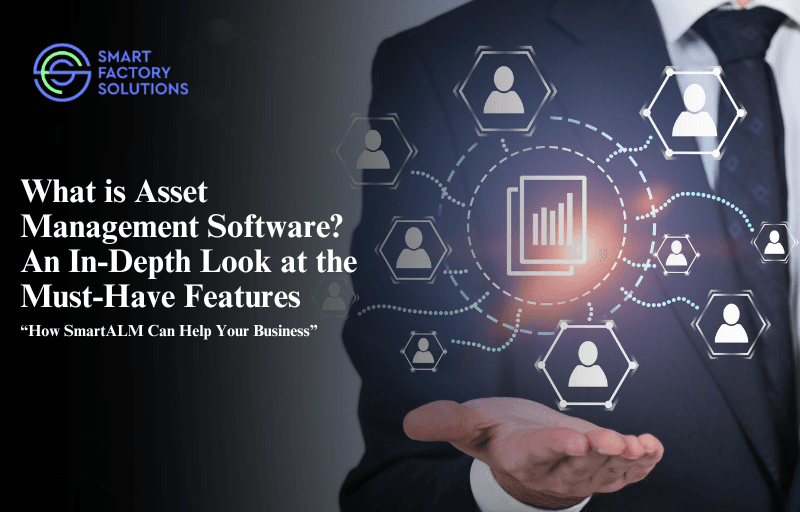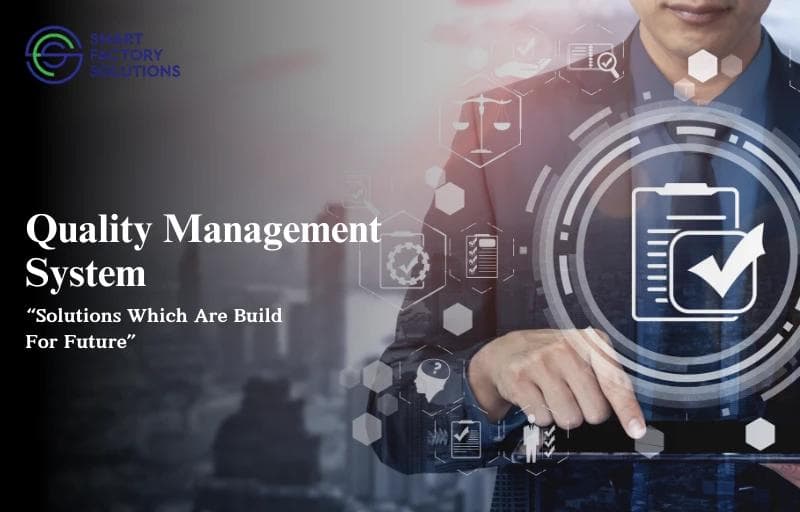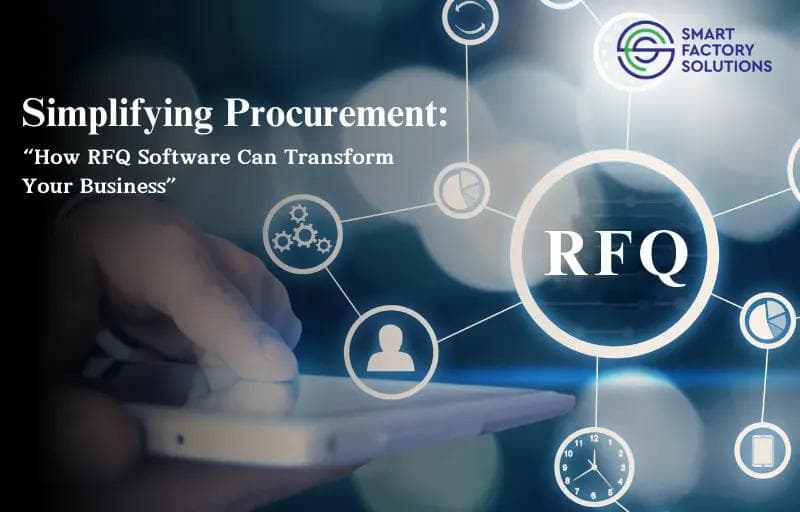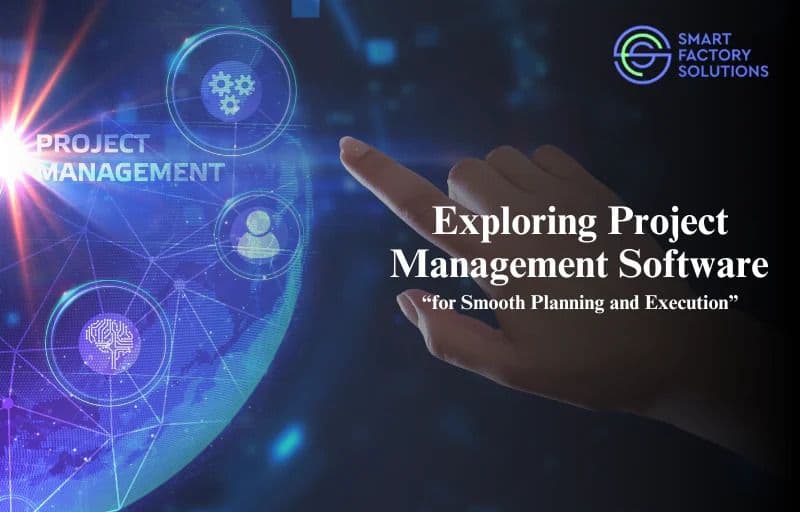Back
What is Asset Management Software? An In-Depth Look at the Must-Have Features and How SmartALM Can Help Your Business

In today's fast-paced business environment, managing and optimizing assets is no longer a simple task. Whether you’re dealing with IT infrastructure, machinery, equipment, or even intangible assets like software, maintaining control over the lifecycle of each asset is crucial. This is where asset management software comes into play.
In this blog, we’ll discuss what asset management software is, the necessary features it should include, and how a comprehensive solution like Smart Asset Lifecycle Management (SmartALM) can help streamline operations, boost efficiency, and ensure compliance.
What is Asset Management Software?
Asset management software is a technology solution designed to manage, and optimize the utilization of an organization’s assets throughout their lifecycle. The software provides a centralized platform to monitor asset performance, manage maintenance schedules, handle renewals, and ensure compliance with regulatory requirements.
Asset management software can be used across various industries, from IT and manufacturing to healthcare and finance. Its primary goal is to help organizations maximize asset performance, reduce costs, and make informed decisions regarding asset acquisition, maintenance, and disposal.
With automation and real-time data insights, this type of software helps businesses reduce downtime, optimize asset utilization, and prolong asset life, ultimately improving the bottom line.
Essential Features of Asset Management Software
When choosing an asset management solution, it’s essential to ensure that it offers a comprehensive set of features that can manage the full asset lifecycle. Here are some key features to look for:
1. Bar Code & QR Code System
With barcode or QR code scanning capabilities, it becomes easy to scan assets and retrieve up-to-date information, reducing the need for manual record-keeping and minimizing errors.
2. Lifecycle Management
Managing an asset’s lifecycle—from acquisition to disposal—is fundamental. Effective software should track each asset’s entire history, including purchase, deployment, usage, maintenance, and eventual decommissioning or disposal. This level of insight allows businesses to make better decisions on when to replace or upgrade assets, saving both time and money.
3. Warranty and Insurance Management
Keeping track of warranty expiration dates and insurance coverage for each asset can be a daunting task, especially for large enterprises. Asset management software simplifies this process by tracking warranty and insurance details, ensuring you never miss a renewal or coverage deadline. This not only saves time but also helps mitigate risks and manage claims more efficiently.
4. Regulatory Compliance and Audit Trails
Many industries have strict regulatory requirements related to asset management, especially in sectors like healthcare, manufacturing, and finance. Asset management software helps organizations stay compliant by maintaining detailed audit trails of every asset transaction. This ensures transparency and makes it easy to demonstrate compliance during audits.
5. Centralized Data and Integrations
The ability to centralize all asset-related information in one platform is another must-have feature. An efficient asset management software should integrate seamlessly with other systems like ERP (Enterprise Resource Planning) or CRM (Customer Relationship Management) platforms, allowing for a more streamlined workflow. This eliminates the need for disparate systems and reduces data silos.
6. Custom Notifications and Reporting
Each business has unique requirements, and asset management software should provide customizable notifications and reports. Whether it’s notifying you about upcoming maintenance, insurance renewals, or performance issues, customizable alerts ensure you stay proactive. Additionally, detailed reporting capabilities offer insights that can guide decision-making and asset optimization.
7. Role-Based Access Control
In large organizations, different departments may need varying levels of access to asset information. Role-based access control allows administrators to assign permissions based on roles, ensuring that sensitive data is only accessible to authorized personnel. This feature enhances security and ensures that the right people have access to the right information.
8. Ticketing and Issue Management
Managing asset-related issues such as repair requests or maintenance tickets is crucial for smooth operations. Asset management software with built-in ticketing and issue management systems allows users to log and track issues efficiently, ensuring timely resolutions and minimal downtime.
How SmartALM Can Help Your Business
Now that we’ve covered the essential features of asset management software, let’s talk about how Smart Asset Lifecycle Management (SmartALM) stands out as a comprehensive solution that can address your business’s asset management needs.
SmartALM is designed to offer a complete solution for managing assets, providing not only the necessary features but also advanced capabilities that allow businesses to optimize asset performance and streamline operations. It centralizes asset data, automates workflows, and ensures your assets are always in optimal condition—making it a smart choice for organizations looking to improve efficiency and reduce costs.
Key Benefits of SmartALM
● Automated Workflows:
SmartALM streamlines asset management by automating workflows, helping businesses reduce manual tasks and increase operational efficiency.
● Service and Warranty Management:
With SmartALM, you can easily track service and warranty details for all your assets, ensuring timely maintenance and mitigating risks related to missed warranties or insurance expirations.
● Regulatory Compliance and Audit Trails:
SmartALM helps you stay compliant by maintaining detailed audit trails for every asset transaction, making regulatory compliance effortless.
● Custom Notifications:
Set custom notifications to keep you informed about important asset-related events like upcoming maintenance or expiring warranties.
● Role-Based Access Control:
With role-based access, SmartALM ensures that each user has access only to the information and controls relevant to their role, enhancing both security and usability.
● Ticket Management:
SmartALM’s integrated ticketing system helps manage and resolve asset-related issues more effectively, minimizing downtime and keeping your assets running smoothly.
SmartALM’s Advanced Features in Action
Let’s take a closer look at how SmartALM delivers on the essential features outlined earlier:
● Full Asset Lifecycle History:
Track every asset from acquisition to disposal. With SmartALM’s comprehensive history tracking, you gain full visibility into every stage of an asset’s lifecycle, enabling better decision-making and performance optimization.
● Barcode and QR Code Integration:
Easily track and manage assets with SmartALM’s barcode and QR code integration. Scan assets to retrieve real-time data on maintenance, usage, and condition—cutting down on manual processes and increasing efficiency.
● Centralized Data Management:
SmartALM integrates with other business systems, allowing you to centralize all asset-related data in one place. This integration ensures smoother workflows, reduced data silos, and improved decision-making across departments.
Choosing the right asset management software is crucial for businesses that want to stay competitive, reduce operational costs, and maximize asset performance. With its robust features, SmartALM offers a comprehensive solution for managing assets from acquisition to disposal.
In case you wish to monitor your digital assets, it is the right time to book an appointment with the experts. We encourage you to reach the experts at Smart Factory Solutions for demo.



